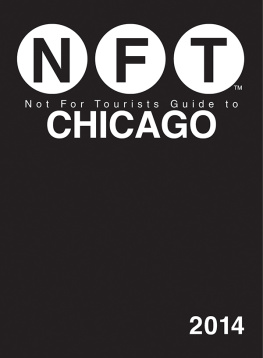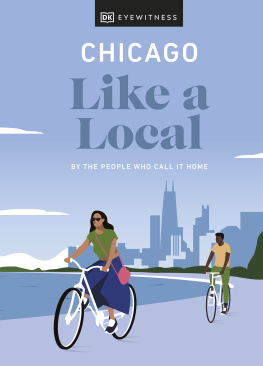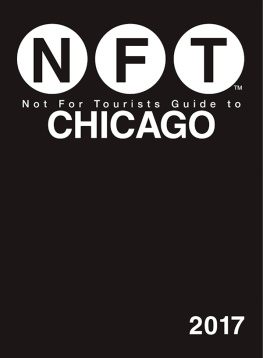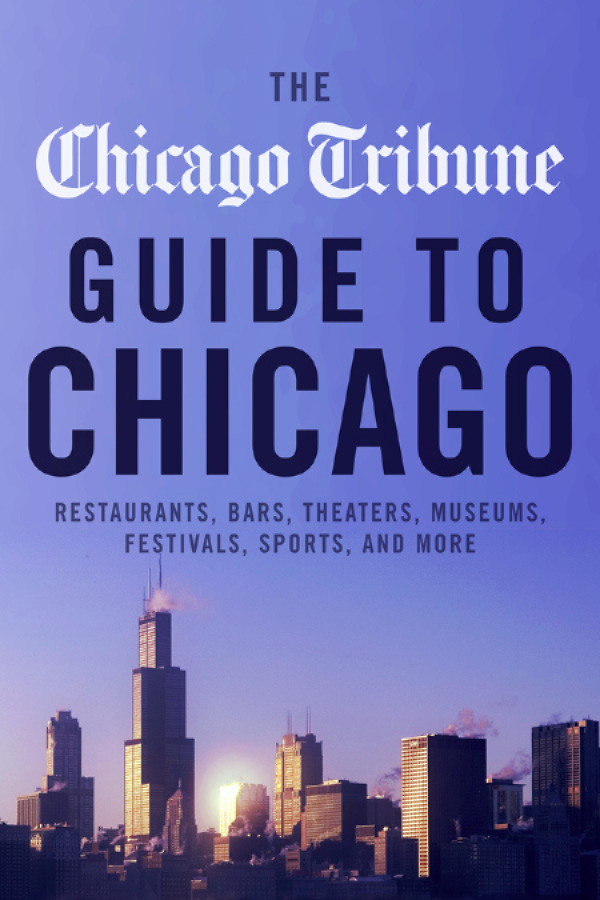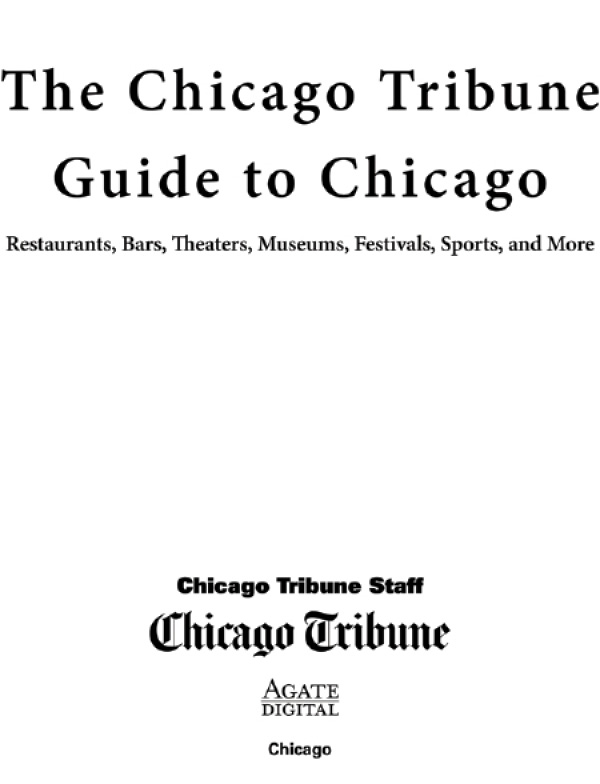This book was created using various content published by the Chicago Tribune. The editors carefully selected from the Tribunes rich archive of material and arranged it to help the reader explore, navigate, and find entertainment in and around Chicago. This is a sampling of the best the city has to offer.
GETTING AROUND
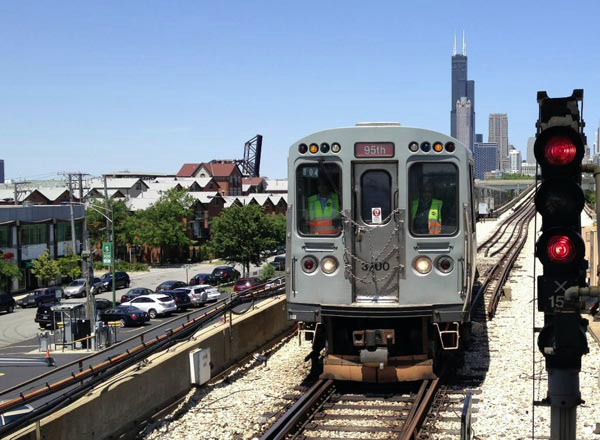
Chicago Transit
The El or the L
You may have wondered, as you climb aboard a CTA train : Are you about to ride the El or the L? According to the CTA, L is the correct usage, dating back over 120 years. While El is the generic abbreviation for elevated, L applies to the whole system.
Thats not to say the El isnt used, despite the fact that only parts of the citys rail system are elevated. Time Out Chicago , a publication devoted to covering arts and entertainment in the city, is among those preferring El.
El can also be found in some book references. For instance, in his 1947 collection The Neon Wilderness, Chicago author Nelson Algren refers repeatedly to the El.
She put her hat on the dresser and sat by the window, looking out at the night-fuming neon all the way down Congress to the El , Algren writes at one point. Though, in fairness, some credit (blame?) East Coast editors for changing the usage.
For the record, Grid Chicago , a blog devoted to energy-conscious transit issues, acknowledged that L is correct. The Tribune favors the L as well.
The most current Tribune stylebook declares: L Acceptable on second reference for elevated train . In headlines, L is acceptable (note the single quotation marks). Do not use el .
The CTA Survival Guide
The CTA provides more than 1.7 million rides each weekday, and for the most part, these rides go smoothly. But occasionally they dont. Sometimes riders experience crimes, medical problems or equipment difficulties with their trains . The CTA has provided tips for riders who find themselves having an L of a day.
Medical Emergency
Occasionally, trains are delayed because of rider medical emergencies. If you have a medical emergency on the train or see a medical emergency on the train :
- You should use the passenger intercom located on each rail car under the blue light to call the train operator, the agency said.
- Rail operators are then supposed to inform the CTAs Control Center, which works in tandem with the Citys 911 center.
- The Control Center would give the rail operator instructions, which may include stopping the train between stations or proceeding to another station to await assistance.
Train Evacuation
The CTA says you should stay calm, wait for instruction and not open rail car doors or evacuate.
If the train is in the station, CTA workers would direct you to exit onto the platform through the side doors. If the train is partially in the station, you would use the end doors of the car to access the portion of the train that is in the station to exit onto the platform.
If the train is not by a station and theres a train behind on the same track, you would use the end doors to access the adjacent train . If theres a train on adjacent track, workers would direct you to a designated car so you can cross a temporary walkway to that train .
If theres no nearby train , the CTA would cut power to the track. You would then use the side doors to access an emergency walkway at track or platform level.
What if I fall on the tracks?
If there are no CTA workers in the immediate vicinity to help, you should ask for help from other riders on the platform and ask them to call 911 to have power to the rails turned off.
If you are not injured or you feel you could move without risking further injury, you should try to return to the platform while making every effort to avoid touching or stepping on any rails.
If you are injured or unable to climb back onto the platform, you should try to move toward the platform and away from the third rail to avoid accidentally touching or brushing up against it. The third rail always will be the rail farthest from the platform at all stations and at most terminals.
Theft
From 2009-11, CTA rail riders reported more than 3,000 incidents of theft, which rose 30 percent during that two-year period, a recent Tribune report found. If you are a victim of a crime on a train or in a station:
- You should not fight back or engage with an offender, the CTA said.
- You should alert CTA workers or call 911 as soon as possible and provide as many details as possible about the offense such as the time, location, rail car number or run number and direction of travel.
- Miguel Fuentes, head of the Chicago chapter of the Guardian Angels, the informal CTA patrol group, recommends noting the offenders unique characteristics such as facial hair, tattoos, missing or crooked teeth and jewelry. Also, take care to note the offenders shoes. Its easy to change shirts, Fuentes said, but its more difficult to change shoes.
- CTA stations have multiple cameras, which may help the police solve the crime. The CTA said it needs riders to report any crimes because information is used in investigations and reports allow the police and the CTA to keep track of these crimes to deploy additional resources as needed.
Battery
CTA train riders reported about 1,000 incidents of battery from 2009-11, the Tribune found. If you see a weapon or a disturbance on a train :
- The CTA has a see something, say something policy for its system that encourages riders to tell a CTA worker immediately if they see unattended packages, odd smells or smoke or someone acting suspiciously.
- When notifying the CTA of a rider with a weapon, Fuentes recommends noting which station the rider exited and the time. Do not follow anyone who has a weapon.
- If you see a disturbance on the train , you should use the passenger intercom to contact the train operator.
See the CTA website for updates, schedules, fare information, and maps: chicagotransit.com
Decoding CTA Fare Beeps and More







